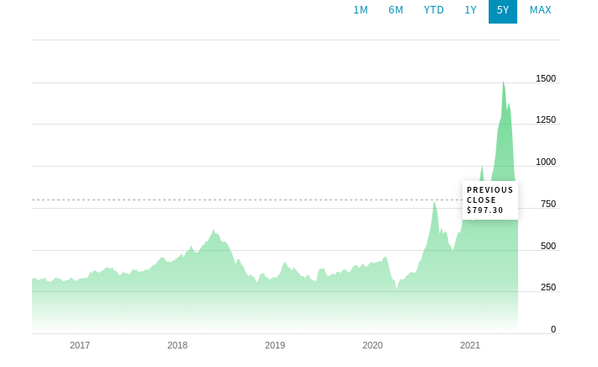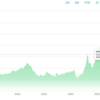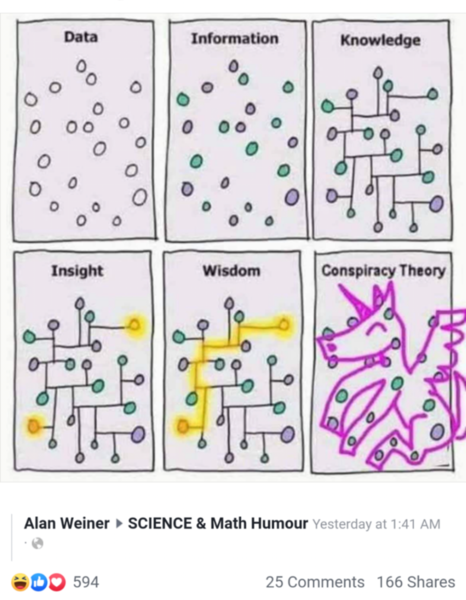Holy carp!
The guvment was worried about price gouging during the initial months of the pandemic. They should be more worried about price gouging now.
My wife and I were fortunate enough to be able to work throughout all of last year and were never at risk of being laid off. Everything was just fine until the stimulus money started flowing.
It didn’t take us long to see prices jump on almost everything. I’m no expert, but it seems to me people can charge anything they want because if you aren’t spending your own money who cares what you are paying.
I bought a plane ticket in April 2020 for a shade over $700. I had cancel the flight but I got a credit with the airline. The same exact itinerary cost me almost $950 two days ago when I was finally able to reschedule.
I'm pretty wiped from the whole "refrigeration guy in midsummer" routine, so my filter is down. Buckle up, because the entire situation makes me pretty salty.
It's not like nobody saw this coming - everybody with eyes saw it coming.
It's not just the stimulus money that's driving this (although several hundred billion washing into the economy certainly helped push it along) - it's the Federal Reserve's absolute "see no evil, hear no evil, speak no evil" monetary policy accelerating entire segments of the economy into legitimate hyper-inflation. I work in such a segment.
Consider building supplies. All the talking heads and article writers made all kinds of (idiotic) observations about people doing all kinds of home improvements during the lockdowns, and opined that this was why a single sheet of 3/4" OSB cost as much as a stack of them did last year.
I suppose home improvements drove some small part of the price increases, but building grade lumber is not used by Ted and Candi building a swingset for Cale. LVLs, 2x12s, and stacks of ugly OSB are used by one group of people - homebuilders. Homebuilders in this part of the world cannot begin to keep up with demand. People care not a whit that their material will cost 2-4x what it did a year ago, because the cost of the money they are borrowing to buy them is insanely cheap. They (rightly, in this economy) figure that a hard asset purchased with somebody else's money at a rate of interest almost assuredly lower than the rate of inflation is a no-brain way to build wealth, AND live in a nicer home.
So yeah, lumber mills had a hard time restarting (we can at least partially blame the enhanced unemployment benefits for that)... but once the feeding frenzy was on, it was a way for mills, wholesalers, and lumber yards to take the profit they had been denied in FY2020. The Fed seemed unconcerned, and tagged inflation as a tangential concern - an anomaly soon to be rectified by the market.
And so it goes across entire industries. In the case of the refrigerant that costs 3.8x what it did a month ago - there was one single plant making one specific gas that had a hard time getting workers to show up (if you've ever worked in a chemical plant, it's not hard to figure out why). Anyhow, they announced they weren't taking new orders until October, and jacked up their wholesale price. Again - this is one manufacturer of one specific gas.
Other manufacturers followed suit. We kept buying the gas because we need it to make your homes cool, and it's summertime. You kept paying it because well... it's summertime. And the contagion spread. Mr. Biden announced we were back in the Paris Accords, which sent all the 400-series gases (410a, 404a, 407a, 407c) through the roof. 134a and 507 were hard on their heels, and then it became a jail-break. Chemical plants aren't even pretending to have slowed production, they're just raising prices because there are no market forces stopping them. I bought a jug of R410a in May for $92. It costs nearly $500 today (I checked).
Wall Street hits new highs every day because the Fed is still buying securities and working very, very hard to keep interest rates near zero. There's nowhere else to go with money, and people are buying the market on margin (because, "why not? it's free money"). Up and up it goes with new highs every day. PE ratios don't matter any more, apparently.
Corn is trading at $6/bushel, and is being used to feed cattle trading at $150. Once the cattle on the hoof makes it to market, no sane rancher is going to replace his herd - he'll go get a job at Farm King until this blows over. Cue 2022 when your T-bone will be running about $30/lb because nobody is left in the game.
And so it goes. Over and over and over. Bitcoin and other crypto-currency increase in value by 10x, then slip back to only 5x their value a year ago. Pan-based speedster replicas sell on BaT for 2-3x what they cost to build. The bread aisle is oddly cleared out at WalMart.
We cannot keep pumping (fake) money into the economy and expecting prices and the supply-chain to remain stable.
As I said the other day, I think Jerome Powell has been sniffing glue with all his Fed buddies in the boy's room down at the Fed Board of Governors meeting - as they signal that maybe, if Cancer is in alignment with Capricorn, and the muse is upon them, sometime in 2023, they might (maybe) start to tighten monetary policy
... hopefully before we are a Banana Republic.
In keeping with my lifelong strategy of "buy high, sell low," lumber prices are down more than 40% in June alone.
I think this might be why I have a bit of skepticism about all of the geniuses telling us exactly what the future holds for us.
CNBC: Lumber prices dive more than 40% in June, biggest monthly drop on record.
https://www.cnbc.com/2021/06/3...-drop-on-record.html
@Michael Pickett posted:In keeping with my lifelong strategy of "buy high, sell low," lumber prices are down more than 40% in June alone.
I think this might be why I have a bit of skepticism about all of the geniuses telling us exactly what the future holds for us.
CNBC: Lumber prices dive more than 40% in June, biggest monthly drop on record.
https://www.cnbc.com/2021/06/3...-drop-on-record.html
Lumber futures are down quite a bit. Lumber prices at retail, also down quite a bit - leaving them 2-4x what they were pre-runup.
^ lumber futures. Happy days are here again - only 2-3x the historical (pre-COVID) moving average.
Attachments
In one of my previous careers, I ran multi-million dollar research projects.
For some reason, the funders demanded accountability in regards to whether the outcomes we measured were from pure random statistical variation or whether we were measuring something real.
Some thoughts: Skepticism is a virtue in science. Signal vs noise measurement is tough to do well. Humans have to make a lot of hard decisions with imperfect and partial data. We do the best we can, but we shouldn't get too cocky about the certainty with which we do it.
Amen to that, @Michael Pickett.
@Michael Pickett posted:... Humans have to make a lot of hard decisions with imperfect and partial data.
Funny the play on words... "partial"
I know what you meant, but that sentence speaks volumes to how the media has behaved over the past 10-15 years... "Partial" meaning "not impartial" or "with an agenda"
Don't mean to derail the conversation, just struck me as apropos.
@Jethro, I agree. I didn't intentionally write it that way. Per my fire first, aim later strategy, I read that line immediately after posting it and had to think about whether it needed changing.
It says what I meant, but it does make you think about the impact of bias in reporting. Just another example of why it's smart to be careful about jumping to conclusions, I guess.
Attachments
.
All reporting is biased.
Mr. Heisenberg taught us you can't measure something without changing it a little, and reporting is something like that.
The sky may be blue, but just how blue depends on who's doing the reporting, when they looked at the sky, and what color sunglasses they like to wear.
They might show you photographs of the blue that support their report, but they probably won't show you the outtakes that don't. That's called 'editing'.
If you keep hearing that the sky is blue but you're more comfortable under a pink sky, you can probably find a reporter who will tell you that the sky is pink - if you look hard enough.
.
@Sacto Mitch posted:.
All reporting is biased.
Mr. Heisenberg taught us you can't measure something without changing it a little, and reporting is something like that.
The sky may be blue, but just how blue depends on who's doing the reporting, when they looked at the sky, and what color sunglasses they like to wear.
They might show you photographs of the blue that support their report, but they probably won't show you the outtakes that don't. That's called 'editing'.
If you keep hearing that the sky is blue but you're more comfortable under a pink sky, you can probably find a reporter who will tell you that the sky is pink - if you look hard enough.
.
Absolutely right! What's funny is that science is almost exactly the same. Not to offend anyone, but there are "scientists" who are happy to report findings that support the agenda of their funders, who have deep personal beliefs about the dangers of 5G cell towers, who know that measles vaccine will give you autism, etc.
At least the scientific method has a process to address bias even though it takes a while to work. Peer review is the first filter: imagine if every reporter had to submit their stories to other reporters who were specialists on the topic before the story was published. Methods, sources and replication are another filter: imagine if reporters had to share enough information for other reporters to redo the interviews and research to see if they came to the same conclusions.
Scientists' reputations among their peers help determine if they get that next grant, are invited to that next conference, get tenure or promotion and get their work published. That doesn't mean that bad science doesn't happen every day, it just means that there's a generally agreed upon way to figure out what theories have the best chance of explaining things.
As one of my old teachers liked to say "Never argue from a non-rejected null hypothesis." Just because you can't prove something isn't false doesn't mean it is true.
.
The only problem with the scientific method is that 100 per cent of scientists are human.
Or, allowing for experimental error, maybe only 99.86 per cent.
.
I experienced another purely random statistical variation again today: 400 series gases all increased in price for the 4th time this week. I only had to buy 2 cylinders of R407A, which was (alas) over $700.
But I can't say with certainty that it's gone up every day this week - it's only been every day so far, and tomorrow is another day. Perhaps somebody will hold the line
... or not.
Hmmm…. I am a bit uncertain about that.
@Stan Galat the video plays my phone's ring tone.





